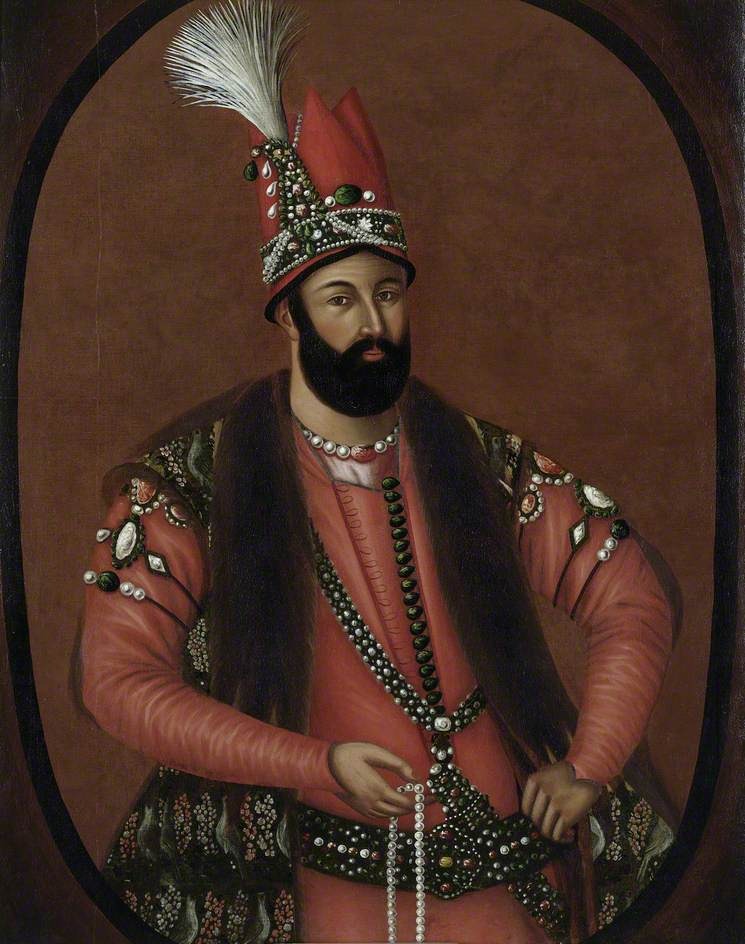In the vastly stretched history of India, there have been several seats of power, which have captivated the eyes of the beholder. One among them is the Takht-i-Taus which changed the entire tradition of throne building not only in India but also in Central Asia. The Takh-i-Taus, most commonly known as the Peacock Throne, was among the most treasured possessions of the Mughal Empire. From its creation to its long journey to Persia with Nadir Shah, the throne narrates its own story. Once representing the golden age of a great empire, adorned with rubies, pearls, and diamonds, the Peacock Throne met its end due to greed for the same adornments.

Shahjahan on the Peacock Throne
The Golden Throne was commissioned by Shah Jahan, the fifth ruler of the Mughal dynasty of India in 1628. The reign of Shah Jahan is known as ‘The Golden Age’ of the Mughal Empire meant not only the treasuries filled with gold and silver but also the immense amount of architectural innovations entering the scene with the construction of monuments like the Taj Mahal and cities like Shahjahanabad. It took the artists around seven years to complete the process of building. The emperor first sat on the throne in March 1635 at the Agra fort but upon the shift of the capital to Shahjahanabad, the Peacock Throne became a symbol of grandeur in the Diwan-i-Khas at the Red Fort. The throne contains more than 1000 Kg of gold and several precious stones, diamonds, and pearls. The throne was also engraved with a verse written in praise of its patron, Emperor Shahjahan.
Although the Peacock Throne is a visible example of the Mughal grandeur and wealth, its construction holds another meaning. The Mughal kings have a tradition of deriving divine sovereignty by associating with famous figures of Islamic and Christian culture like Akbar drew his lineage directly from Adam. Similarly, the reason behind the commissioning of the Peacock Throne was to draw an association with the wisest king, Solomon. The throne was also placed on a higher platform to signify that the king is closer to god than other people of the court and is the shadow of god on Earth.
There have been several records of this throne in the accounts of travelers visiting the court of the Mughal emperors but the most detailed account is of Jean-Baptise Taverneir. He was a French jeweler who was a visitor to the court of Aurangzeb in 1665. His description of the Peacock Throne goes, “Above the canopy was the famed peacock with an elevated tail made of blue sapphires and other colored stones, the body being gold inlaid with precious stones, having a large ruby front of the breast from whence hangs a pear-shaped pearl of 50 carats…” Tavernier also informs us of the cost of the throne being hundred lakh rupees(1 crore), matching up to the cost of building the Taj Mahal. Being a famous jeweler Tavernier also comments that the emeralds engraved in the throne were mostly flawed while the pearls were of exceptional quality. Yet the most priced ornament of the throne is believed to be the 186-carat Kohinoor diamond but its presence is still debated among several scholars.

Jean-Baptise Taverneir
The Peacock Throne remained the seat of the Mughals even throughout the reign of Aurangzeb but in 1739, when Nadir Shah sacked the city of Delhi under the rule of Muhammad Shah, the throne was taken to Persia. In 1747, Nadir Shah was assassinated by his bodyguards, throwing the country into chaos. Cities were sacked, money was stolen and the great Peacock Throne was dismantled to acquire its gold. Different pieces were taken by many individuals including the precious stones and diamonds engraved in the throne. The famous Koh-i-Noor diamond is believed to have been taken by General Ahmed Shah Durrani, who went on to establish the Afghan empire. In 1809, the diamond was taken by the Sikh Empire upon the confrontation with the Afghans.

Nadir Shah
The story of the Peacock Throne does not end with its dismantling. There has been evidence of several parts of the Mughal throne existing at various Central Asian royal courts. For example, some believe that the legs of the Qajar Throne built in 1836, belonged to the Peacock Throne. Several dynasties also continued to call the thrones at their courts after the famous Mughal throne as it became symbolic of political power among the kings. Presently, several conservationists are hunting down parts of the throne from different parts of the world but no genuine claims have emerged.
The image of Takht-i-taus has been carefully crafted in the mind through the descriptions and stories which surrounded it. It was widely recorded in the memoirs of several travelers who were also mesmerized by its beauty and grandeur. It was not only a physical personification of power but also holds a legacy of legitimization. The Peacock Throne continued to exist even after it perished because there was a political power associated with the idea of it. The Throne of gold left a golden legacy.
References
- Richards, J. (1996). The Mughal empire. Cambridge: Cambridge University Press.
- Iftikhar, R. (2013). Historical fallacies: Shah Jahan’s Reign: period of golden Age. A Research Journal of South Asian Studies, 28(2), pp.361–367.
Images
- https://www.metmuseum.org/art/collection/search/446587
- https://artuk.org/discover/artworks/nadir-shah-shah-of-persia-17321747-191186
- http://www.columbia.edu/itc/mealac/pritchett/00generallinks/tavernier/index.html



















